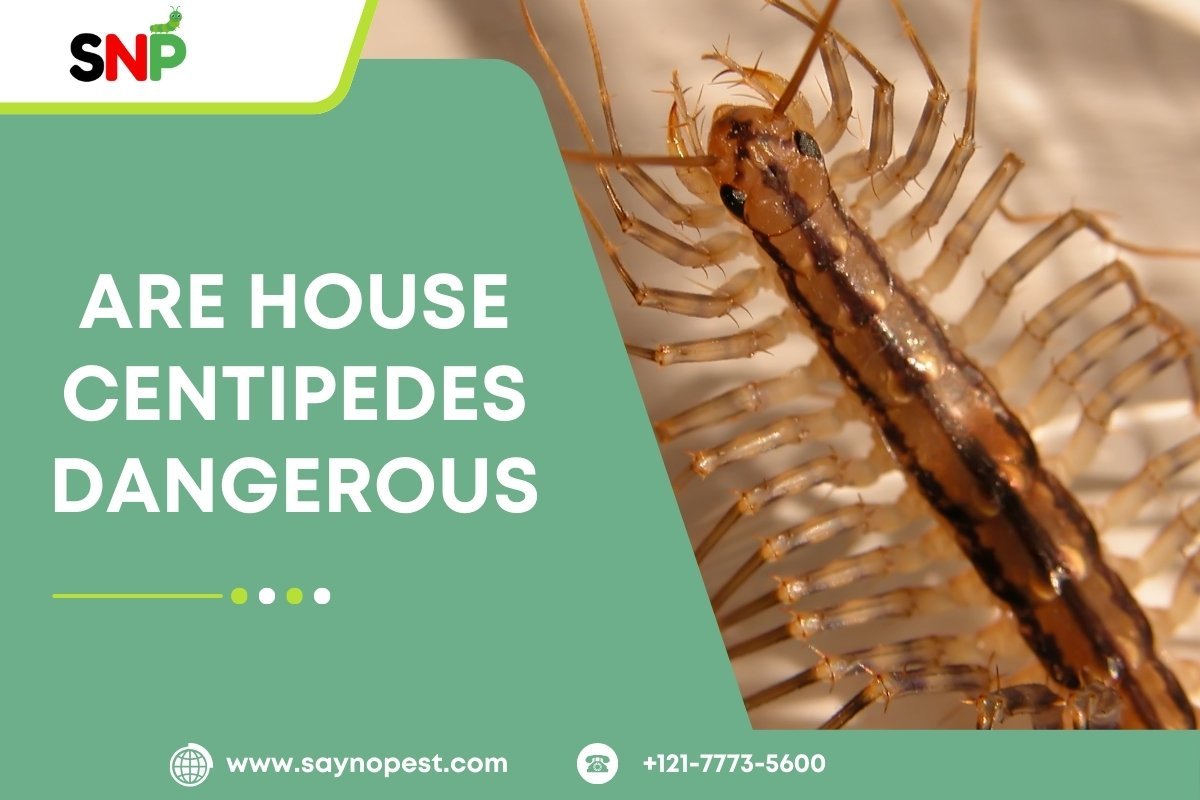Have you ever seen a swift many-legged insect running on your bathroom floor? Then you’ve probably asked yourself, are house centipedes dangerous? The odd appearance of house centipede combined with their many legs can be alarming but learning about their characteristics lets you determine if they pose a threat to your household.
What Is a House Centipede?
The house centipede is by far one of the most common arthropods in U.S. homes. The house centipede is not like other species of centipedes. It can be recognized by its very thin and yellowish grey body marked with three dark stripes along the back and the presence of up to 15 pairs of extremely long and delicate legs – a “feathery” look as they run quickly along the walls and the floor. Adult house centipedes measure 1 to 1.5 inches from head to tail, yet their long legs make them appear much larger. The cylindrical body structure of house centipedes sets them apart from flat species because they move at speeds far greater than other flat species.

House Centipede Diet: Nature’s Pest Controller
One main reason why many professionals and homeowners are okay with the existence of house centipedes is that they act as a wide range of pest controllers. Over 90% of the house centipede diet made up of other insects and arachnids, meaning they mostly eat their kin. Their main prey items are cockroaches, spiders, silverfish, ants, bed bugs, moths, termites, and sometimes even other centipedes. By putting their long antennae to use and locating the prey, house centipedes have a very effective way of removing their unwanted home bugs with the use of paralyzing venom from adapted claws. They can crawl under fridges and other appliances, reaching out to dark corners, chasing and eliminating pests very effectively.
These different types of food are consumed, and it make them more effective in the destruction of various species of undesirable bugs. Furthermore, the house centipedes’ love for live bait will make them indispensable in pest control in your home, meaning that chemical treatments will not always be needed.
House Centipede Lifespan: How Long Do They Live?
The longest-lived attribute about house centipedes stands as their extraordinary lifespan. House centipedes survive for more than seven years while typical insects survive for only a few months, but most house centipedes reach three years of age before death. House centipedes complete their life cycle through four distinct stages that follow this sequence: eggs to larvae to larval molting to adult centipede. First, the eggs hatch into the larval stage, with only four pairs of legs. The lifecycle begins when eggs produce larvae, which start with four legs before molting progresses to more legs until adult house centipedes develop numerous legs.

Are House Centipedes Dangerous to Humans or Pets?
So, are house centipedes dangerous? The answer is: not really. Due to their weak jaws, house centipedes deliver bites that create no significant pain when they bite human tissue. The pain from a house centipede bite feels like a bee sting, although severe reactions from these bites occur rarely. House centipedes spread no diseases and neither destroy property nor threaten human beings or their pets. The biggest “danger” they can pose is frightening someone, which will lead to an accidental fall or injury. For most people, their being is more a source of mental disturbance than an actual danger.
Where Are House Centipedes Most Common in the U.S.?
House centipedes are a species widely distributed in the United States, but they are mostly found in the hot, moist regional areas where they can get their higher chance of better prey. Based on pest control reports and the most favorable environmental conditions for their proliferation, we can mention the top states where house centipedes are the most common:
- Florida
- Texas
- California
- New York
- Pennsylvania
- Illinois
- Ohio
- Georgia
- Washington
- Oregon
These states offer the damp, cool environments that house centipedes prefer, such as basements, bathrooms, and crawl spaces.
Conclusion: Should You Worry About House Centipedes?
So, are house centipedes dangerous if we sum everything up? If we go directly to this point of the essay and answer the simple question- if house centipedes are dangerous- the response will be negative, meaning they are not harmful to people or animals, and their attacks are rare and not severe. The house centipede is a consumer of unwanted insects and thus it is recognize as a valuable executor due to its different diet from the pests in your house. These creatures might be interpreted by you as long-time partners-their life cycle is around seven years-that will help you eliminate the invaders of your space. Not only that, they are also the source of a big surprise in your life.



